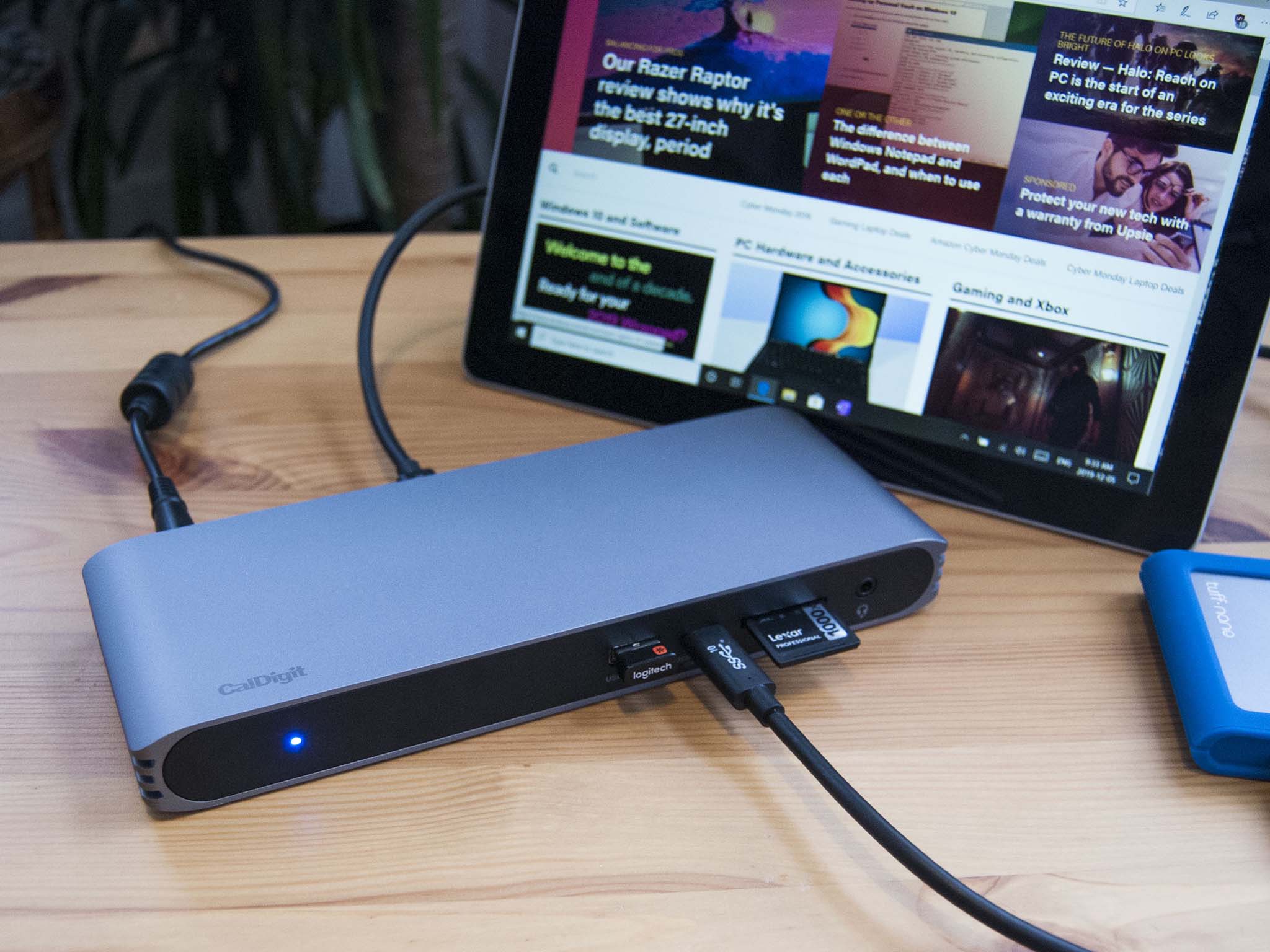

CalDigit's TS3 Plus has been our long-running top pick for a docking station. Still, its awesome performance is restricted to use with laptops that have Thunderbolt 3 capabilities. Now CalDigit has created the USB-C Pro Dock, opening up a lot of the same features and perks to laptops with standard USB-C connectivity, as well as holding onto Thunderbolt 3 compatibility. I've been using it at my desk to see how well it works and whether or not it's worth the price.

Bottom line: You get fewer ports than with the TS3 Plus, but the USB-C Pro Dock will work with more devices and will still deliver superb performance.
For
- Removable host cable
- Up to 85W charging
- Durable aluminum build
- Excellent port selection and performance
- More affordable than CalDigit's TS3 Plus
Against
- No downstream Thunderbolt 3
- Fewer overall ports than TS3 Plus
- No vertical orientation option
What I love about CalDigit's USB-C Pro Dock
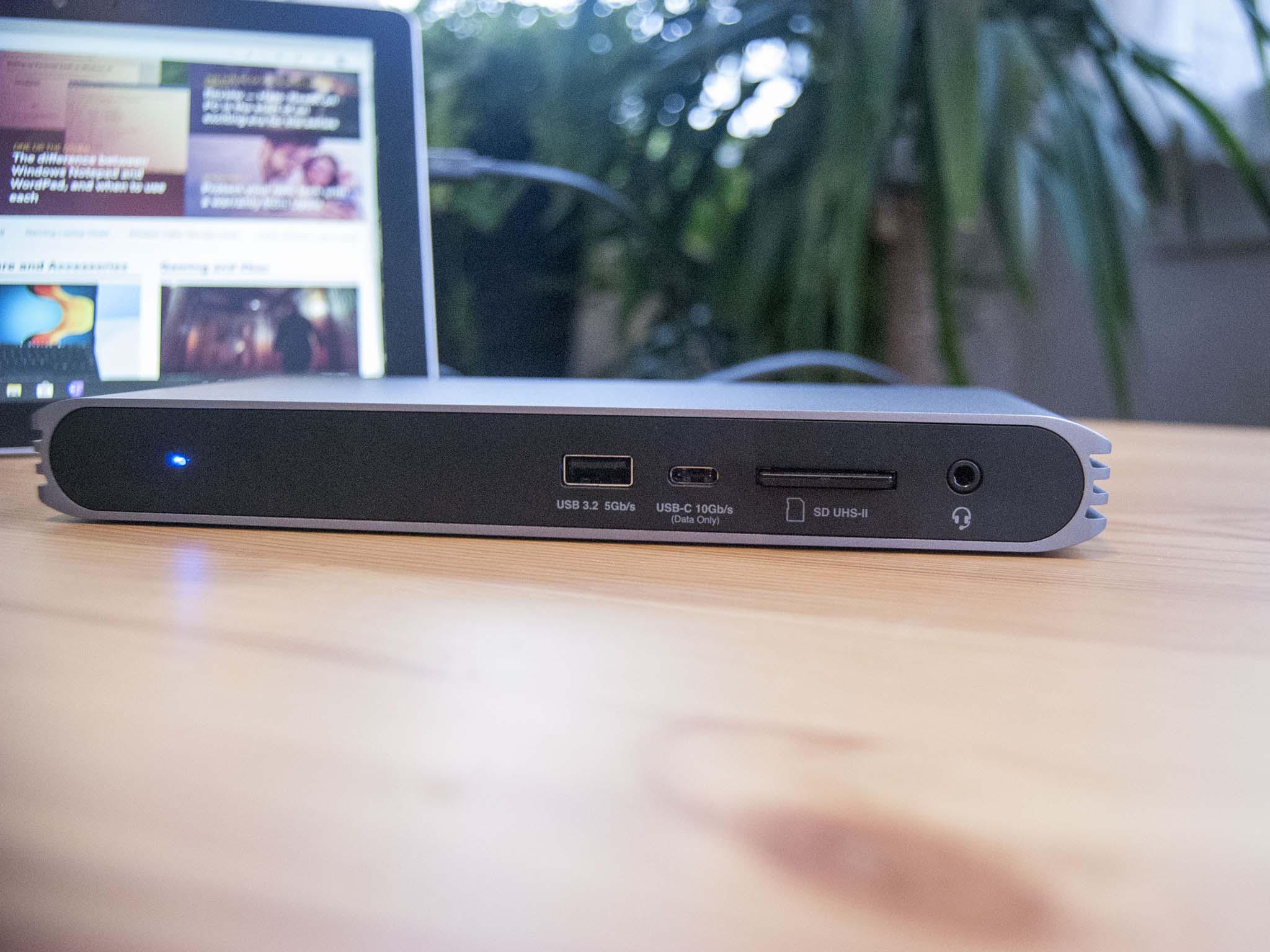
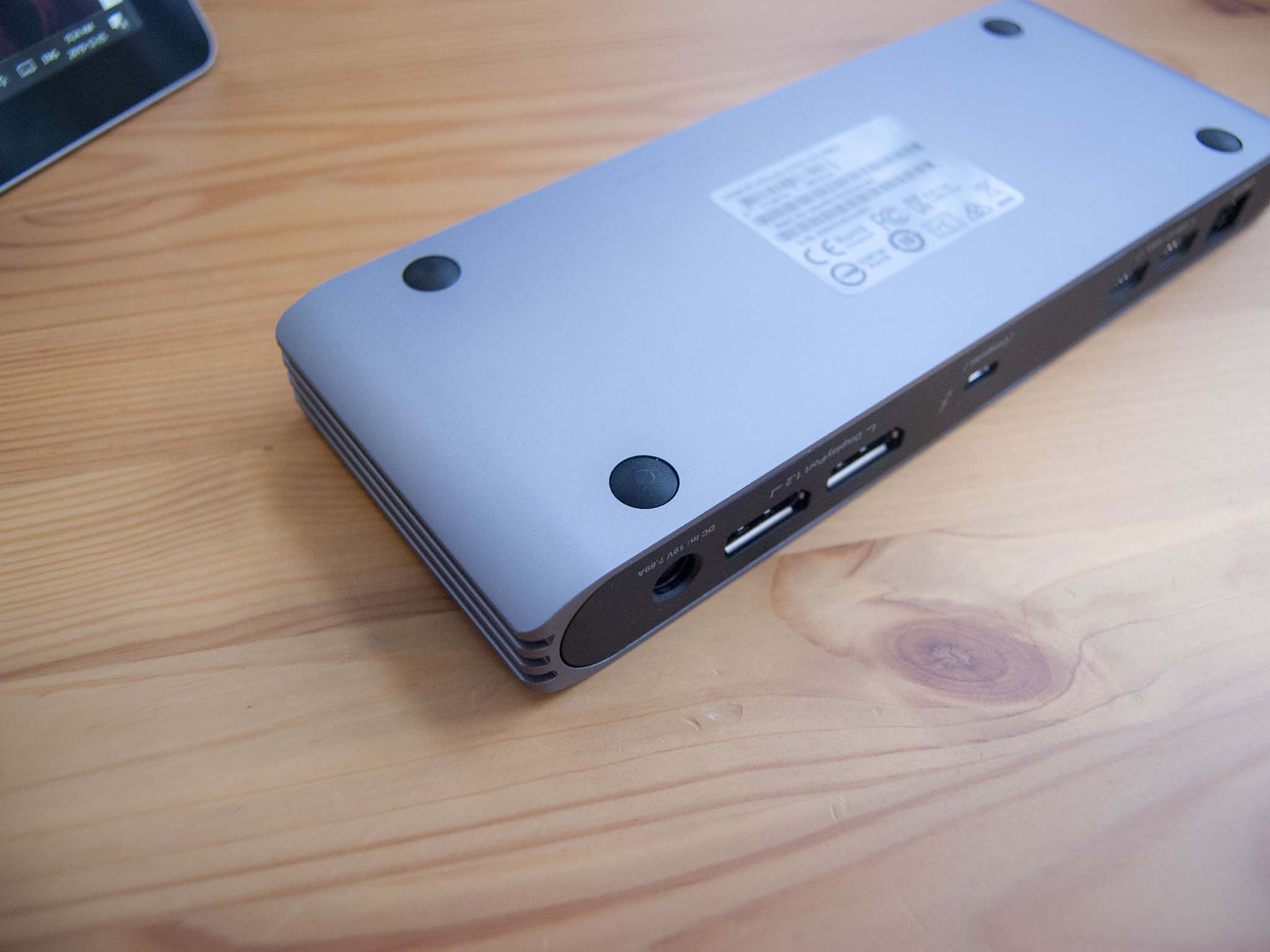
The USB-C Pro Dock is made from a substantial chunk of aluminum, with grooves on the sides to help dissipate heat and give it a bit of flair. The front and rear edges housing the ports are plastic, so it's not wholly metal like the TS3 Plus, but it still feels durable. Standing it up vertically isn't an option; there are four rubber anti-slip feet on the bottom of the dock to keep it from sliding around when ports are full. To set things up, all you have to do is connect the dock to the power supply and connect a compatible device with the removable host cable that measures 2.3 feet (0.7 meters). You can connect the dock with a USB-A port on the host device, but you'll be limited to using USB ports, SD card reader, Ethernet, and audio ports. No display or charging support will be available.
| Category | Spec |
|---|---|
| Ports | Thunderbolt 3/USB-C (Host)Two DisplayPort 1.2Three USB-A 3.2 (Gen 1)USB-C 3.2SD card reader (UHS-II)Ethernet3.5mm audio |
| Max display res | Thunderbolt 3:Dual 4K @ 60HzUSB-C:Single 4K @ 30Hz |
| Power delivery | Up to 85W |
| Dimensions | 8.43 x 3.15 x 0.98 inches(214mm x 80mm x 25mm) |
| Weight | 0.93 pounds (0.42kg) |
The rear edge of the dock includes the lone Thunderbolt 3 (USB-C) port that is used to connect to the host device. Also on the back is a plug for the AC adapter, dual DisplayPort 1.2 for video out, dual USB-A 3.2, and Ethernet. Testing with a voltage and amperage meter, the rear USB-A ports offer 7.5W of charging, while the lone USB-A port on the front delivers 5W of charging. The front of the dock also includes USB-C 3.2 (data only), a UHS-II SD card reader, and a 3.5mm jack for use with headsets (mic and audio).
I tested the SD card reader with a Lexar Professional 1000x UHS-II card using a 10Gbps USB-C host and a 40Gbps Thunderbolt 3 host. I got back an average read speed of 150MB/s and write speed of 89MB/s with both devices. I also tested a solid-state drive (SSD) performance with CalDigit's Tuff nano. The dock connected to a Thunderbolt 3 host was nearly able to max out the drive's performance at 1,000MB/s read, and 900MB/s write speeds. Testing with the dock connected with 10Gbps USB-C, read and write speeds were slightly lower but still impressive. Note that devices with a 5Gbps USB-C port (like the Surface Go) will see a performance from the likes of a speedy external SSD cut in half.
The CalDigit USB-C Pro dock is built well, and performance is stellar on both USB-C and Thunderbolt 3 devices.
Like the TS3 Plus, the USB-C Pro Dock can deliver up to 85W of charging power back to the host laptop through USB-C or Thunderbolt 3. That means devices will charge while connected, no matter how many other accessories you have plugged in. For larger laptops with dedicated graphics, 85W might not be enough to keep up to a massive power draw, but at least there is still power being delivered to prolong battery life. This is especially important if your laptop only has one Thunderbolt 3 or USB-C port used for charging.
The most significant difference between Thunderbolt 3 and USB-C connectivity is external display support. When connected to a host Thunderbolt 3 port with dual DisplayPort streams, compatible devices will be able to connect to dual 4K displays with a 60Hz refresh rate. That's an impressive setup. If you're connecting with USB-C only, the dock supports dual 1080p (FHD) displays or a single 4K display with a 30Hz refresh rate.
What I dislike about CalDigit's USB-C Pro Dock
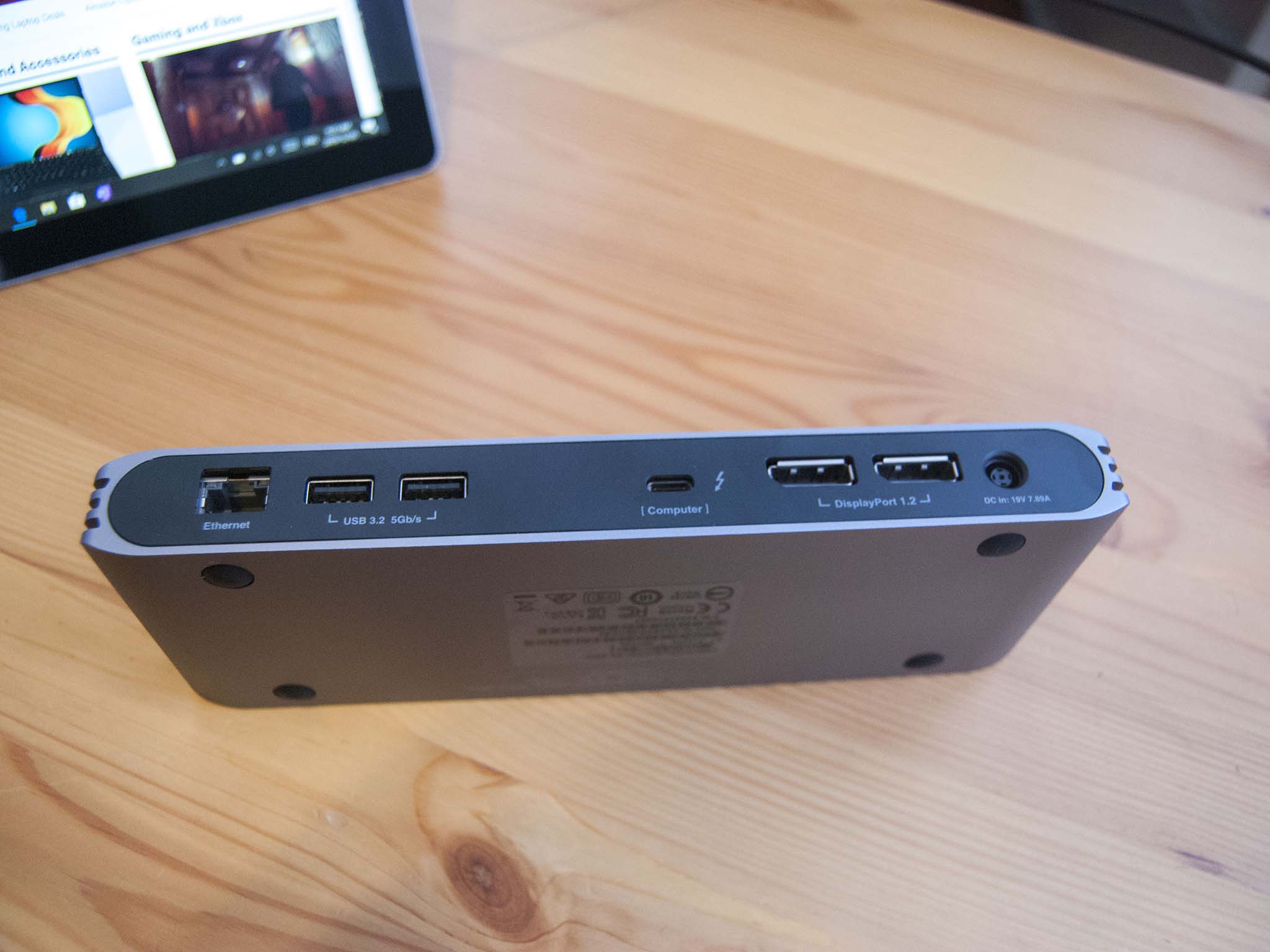
After using the USB-C Pro Dock on my desk while tackling daily work, I've not found much to dislike. It would be nice to be able to stand it up vertically — my desk is often quite crowded — but the metal case is strong enough that I wasn't worried about temporarily stacking other hardware on top of it. It also never got too hot when under load.
Get the Windows Central Newsletter
All the latest news, reviews, and guides for Windows and Xbox diehards.
The dock only has the one Thunderbolt 3 port for connecting to the host laptop, and anyone hoping for an extra Thunderbolt 3 downstream is out of luck. It was sacrificed to have two DisplayPort 1.2 ports. The dock also overall has about one third fewer ports than the TS3 Plus, but the tradeoff there is about an $80 difference in price.
Should you buy CalDigit's USB-C Pro Dock?
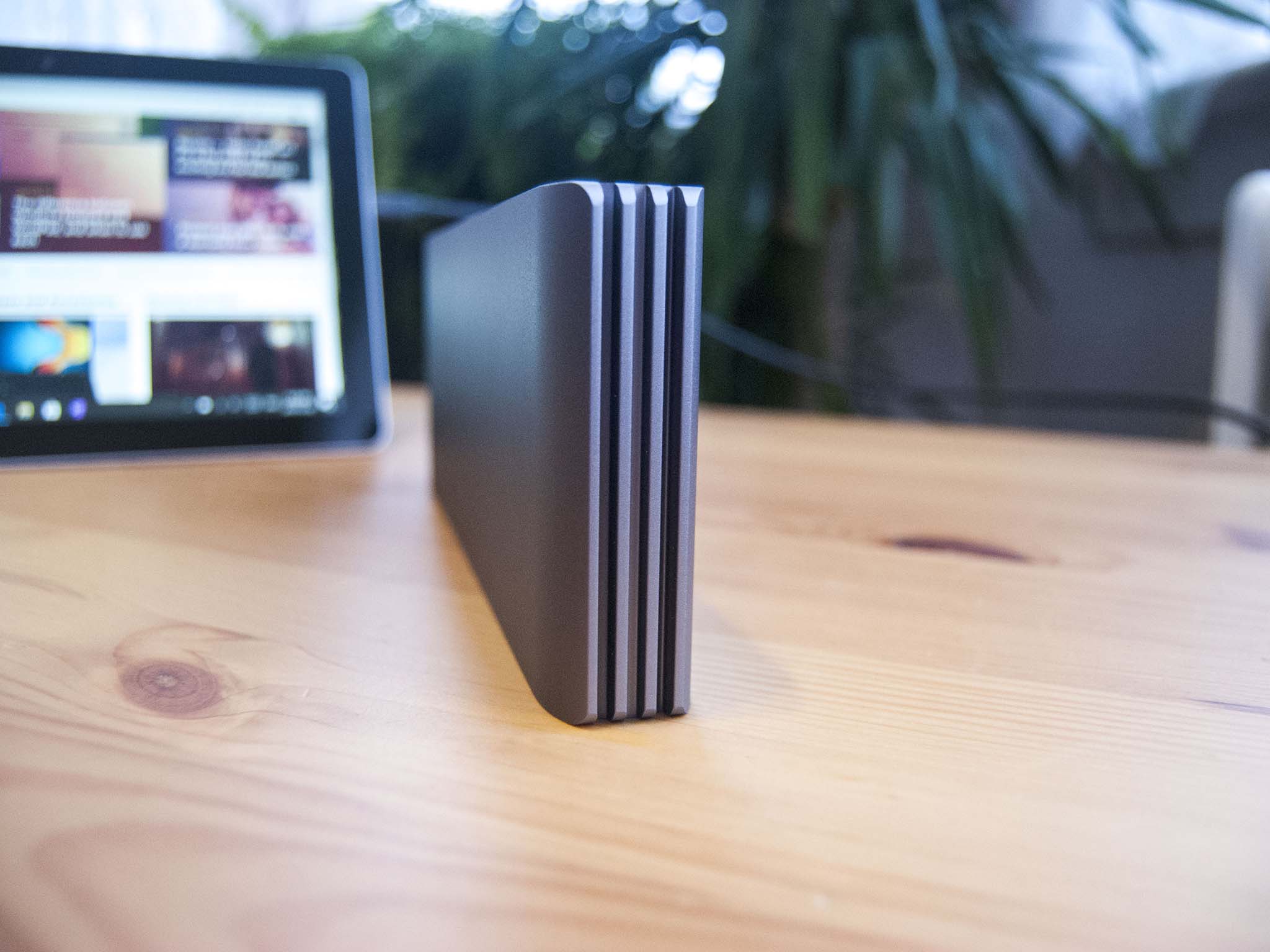
If you have a USB-C device — like the latest Surface products — you will be able to get a lot out of the CalDigit USB-C Pro Dock. It's a great choice if you want something that will last for years to come and will be compatible with future laptops and devices that move to Thunderbolt 3. And if you already have a laptop with Thunderbolt 3, you'll get access to all this dock has to offer, including support for dual 4K external displays at a 60Hz refresh rate.
It's a solid choice for multi-platform and multi-device users thanks to macOS and Windows support. Though it doesn't come with as many ports as the mighty TS3 Plus, it does come at a far more digestible $200 price. A two-year warranty and lifetime support are included.

Cale Hunt brings to Windows Central more than eight years of experience writing about laptops, PCs, accessories, games, and beyond. If it runs Windows or in some way complements the hardware, there’s a good chance he knows about it, has written about it, or is already busy testing it.
